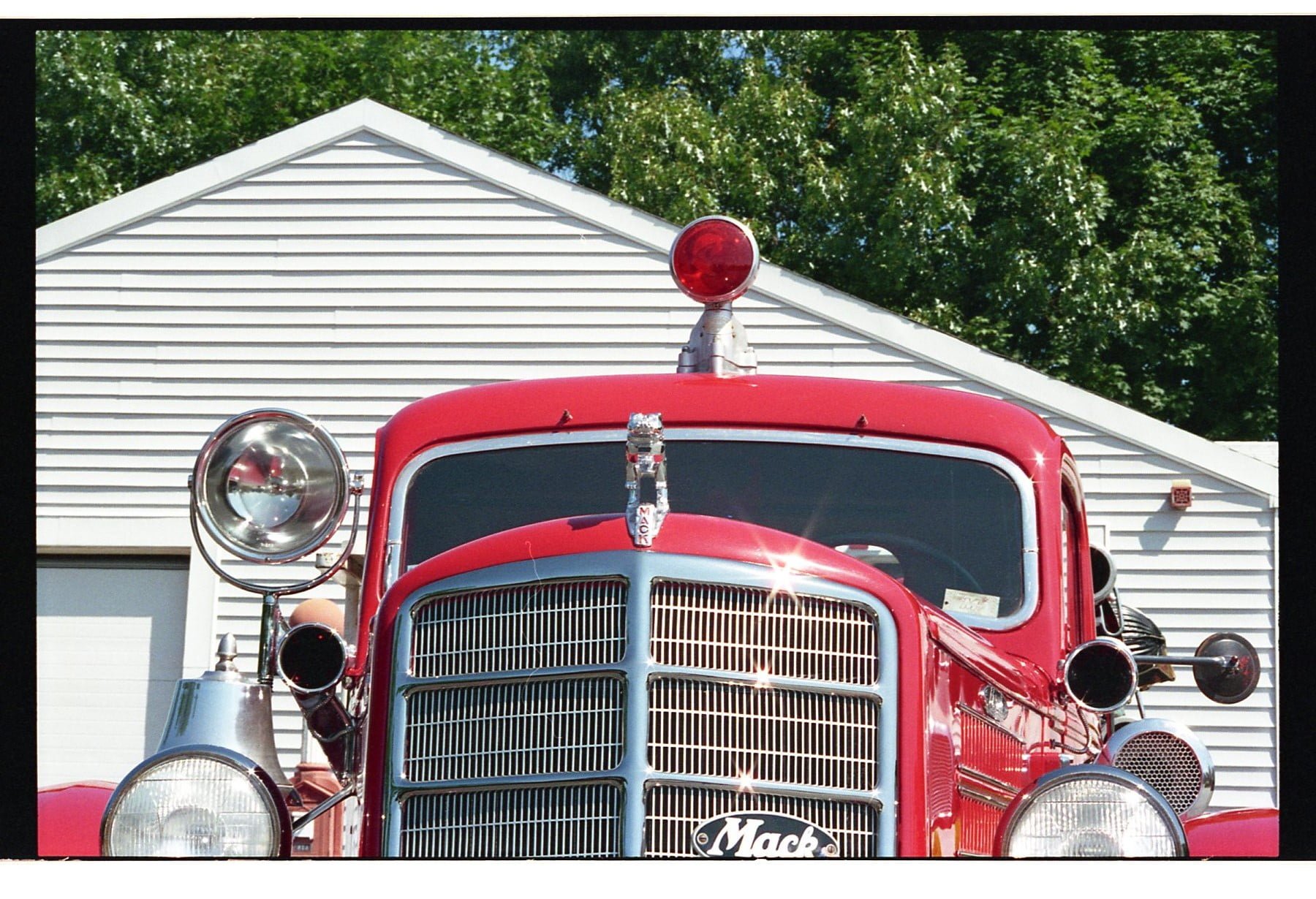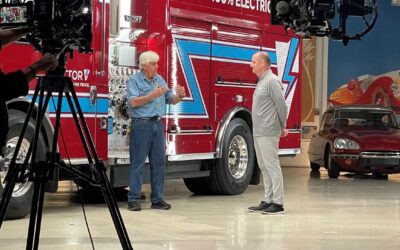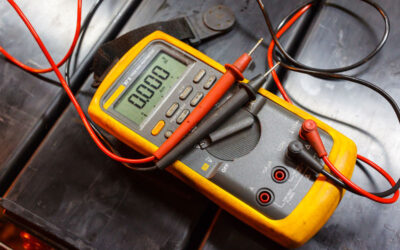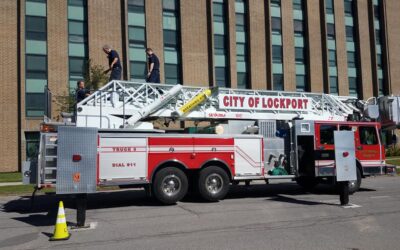By Bill Adams
When buying a new rig, purchasers can easily spend five figures for a warning light system that is compliant with the National Fire Protection Association NFPA 1901 Standard for Automotive Fire Apparatus. Really affluent purchasers might specify multiples of every light imaginable—the more, the most expensive, and the brighter the better. Others specify warning lights for specific applications such as use on busy highways. There are no qualms or questions about their decisions. It appears warning light manufacturers are attuned to those who can afford, or want, or are willing to, or can be convinced to purchase the biggest, best, and brightest lights on the market. That’s what vendors do; it’s their job to sell. There’s no questioning that either.
Seldom addressed are the little people. They include the poor folk, the repair shops, and the do-gooders. In this instance, a do-gooder is someone who is honestly and genuinely trying to help. Why this grouping of purchasers is snubbed, overlooked, or disregarded is immaterial. The “little people” should be just as important to warning light manufacturers as the purchasers with the deep pockets.
Menke on Liability
Ken Menke III recently retired as owner and president of the former PowerArc warning light company. Always an excellent source for technical information on warning lights, he acquiesced when offered the opportunity to say a few tidbits “on his way out the door.”
Liability is a word with definitions ranging from responsibility to accountability to actual guilt and is a topic best left to the legal profession to address. In the fire truck world, manufacturers are well aware if not terrified of it. And most business is conducted with that in mind. End users and installers of warning lights should be cognizant of liability particularly when repairs or upgrades are made to fire apparatus.
Menke summed up liability very succinctly: “If you upgrade, modify, or alter anything on a fire engine, and someone is hurt or an accident occurs, you could be held liable if it can be proven that your actions contributed to the incident. As an example, if a fire department member feels the brakes are loose and adjusts them and there is an accident, the department is solely responsible.” That sums it up rather nicely.
The Poor Folk
The poor folk are seldom talked about. They are fire departments that for no fault of their own are destitute. They could never afford a new rig. What turnout gear is available is all hand-me-downs and there’s only four self-contained breathing apparatus—if any—for their two dozen members. The major discussion at their last meeting was whether to pay a portion of the month’s electric bill or purchase fuel for the rigs. Even their non-believers were asked to pray for no rain during their upcoming chicken-barbeque fund raiser. Below are a couple instances where some poor folk wanted to purchase some warning lights.
Scenario #1: A 30-year-old pumper, similar to the one in the photo, was stripped of all its warning lights before it was acquired. The department wants to purchase the least expensive NFPA compliant LED warning lights and install them in-house. Menke: “A 30-year-old truck would have been built prior to the 1996 NFPA major changes. It is an antique and should be placed in a museum. Would not recommend a light upgrade, would recommend a truck upgrade. At least year 2000 or 2005.”
Scenario #2: Another department purchased a small walkaround utility body and are mounting it on a used, two-door commercial chassis, also purchased. They also will purchase and install themselves the least expensive lights to just meet the minimum NFPA 1901.
Menke alluded that for both scenarios eight to 10 lower-level LED lights could range between $1,000 to $3,500; a lightbar could be $1,500 to $3,500; and a couple beacons or four corner lights at the rear upper could be $600 to $1,000. They are manufacturers’ suggested retail prices and do not include labor, shipping, or the cost later for an automotive electrician to fix an “oops” when they are installed by willing but not qualified department members—do gooders.
Scenario #3: When asked if halogen lights could be used in lieu of LEDs for the above scenarios, Menke replied: “Halogen warning lights are dead. They follow the same path as hard rubber tires. They work well, are low maintenance, but do not provide the performance and cost effectiveness as LED’s or pneumatic tires. If my fire history is still correct, New York’s shops were ordering hard rubber tires on their apparatus up and into the 30’s. They never went flat. The shop loved them; the men hated them. Very rough on cobble stones. No. LEDs are now brighter, cheaper, more reliable, and a lower cost longer term then halogen.”
Repair Shops
Many rural fire departments outside of suburbia do not have access to nor can afford the services of facilities specializing in fire apparatus repair. They will often have a local auto repair or welding and fabrication shop facilitate repairs. Or they do it themselves. There is no disparaging the quality of any local repair shops’ work or the willingness of a fire department to repair their own equipment.
Local repair shops might not have access to or even be aware of NFPA 1901 requirements. Say a pumper hits a low-hanging branch clear off the upper rear warning lights and their stanchions. A local fab shop repairs the stanchions and replaces the warning lights. Were NFPA 1901 compliant lights installed? And, were they installed in accordance with the light manufacturer’s requirements so they meet the standard? Does it matter? Liability can exist regardless of good intent. Liability is possible if fire department members replace warning lights. There is a possible caveat that I can’t answer. If a light being replaced was NFPA compliant at the time of purchase is, does the new light only have to meet NFPA standard in effect when the rig was first purchased? Ask your favorite vendor. See if he squirms if you ask for the answer in writing.
I asked Menke for his opinion on a couple other things. Remember, he no longer is in the warning light business, hence, he has no skin in the game.
#1 – NFPA 1901 says lighting OEMs have to keep on file and provide results of each NFPA compliant light’s compliance. Are the test results and installation requirements regularly given to fire apparatus repair/refurbishment shops that are not actual OEMs who build complete apparatus? Menke: “Industry practice is not to provide anything more than a general table showing product compliance based on zone. All light manufacturers have the data on file, but most do not wish to allocate the labor and time. The complexity of lighting packages adds to the difficulty. Fundamentally, the only time light manufacturers will provide the data is to secure the sale—or when requested in a lawsuit.”
#2 – If a fire department wants to upgrade or replace one or some of their warning lights in-house, should they request the lighting manufacturer’s test results and installation requirements? Menke: “They can, and should, to protect themselves from lawsuits. If they upgrade anything on a fire engine, they can be held liable in court.”
I believe warning light manufacturers should, as standard practice, provide specific instructions with their NFPA 1901 warning lights how they must be installed in order to be compliant for each zone of coverage. If they will not provide it, buy someone else’s light.
Points to Ponder
*A small fire company only running 25 calls a year is not justification for not using compliant warning lights, but only running 25 calls per year may be justification for not purchasing the most expensive NFPA compliant warning lights in the Western Hemisphere.
*I think if you look around hard enough, you’ll still find halogen lights that are compliant to today’s NFPA requirements. Remember, today’s warning light efficacy criteria was established and based around halogen lights in 1996. Maybe if it’s not broke don’t fix it.
*It is possible to have a single warning light on each side on top of the cab and be compliant. A lightbar is not a requirement. However, a lightbar platform is useful to mount radio antennas, traffic advisors and traffic control lights, and DOT lights as well as forward- and side-facing scene and work lights.
*NFPA 1901 compliant warning light requirements are supposedly adequate for use nationwide. There can be specific locales and situations where additional lighting is necessary such as for “blocking” on busy highways and for heavily congested areas with numerous intersections.
*A one-square-mile response district with 100 homes on a remote island with six roads may not require warning lights bright enough to melt the polar ice cap and are capable of blinding pilots of low-flying aircraft.
*Remember, the attorney will ask, “Who was the last person to touch/fix/replace/repair the fire truck?” CYA is good advice, so is using common sense.






